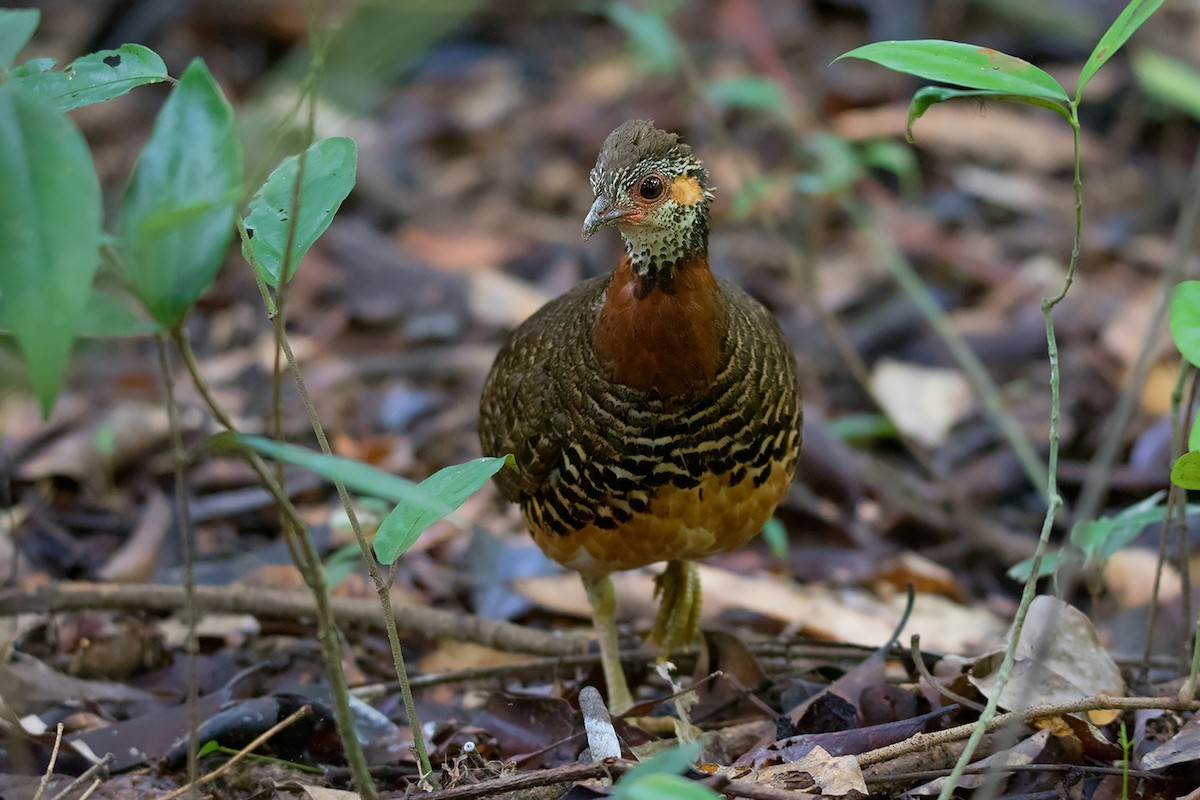Chestnut-necklaced Partridge
A species of Hill Partridges and Green-legged Partridges Scientific name : Arborophila charltonii Genus : Hill Partridges and Green-legged Partridges
Chestnut-necklaced Partridge, A species of Hill Partridges and Green-legged Partridges
Botanical name: Arborophila charltonii
Genus: Hill Partridges and Green-legged Partridges
Content
Description General Info
 Photo By Ayuwat Jearwattanakanok
Photo By Ayuwat Jearwattanakanok Description
The chestnut-necklaced partridge is 26–32 cm (10–13 in) long. The male weighs about 290 g (10 oz) and the female weighs about 250 g (8.8 oz). The crown and nape are brown, with dark speckles. The whitish supercilium, throat and neck have brown streaks. The upper breast is chestnut, with a blackish collar above it. The lower breast is brown, and the belly and flanks are buff. There are dark scales on the lower breast and flanks. The upperparts are brown, finely marked blackish and buff. The beak is greenish yellow, and the legs are yellow. The female bird is smaller and a little duller than the male. The subspecies atjenensis has brighter plumage, and graydoni has greenish-yellow legs. 
Size
30 cm
Nest Placement
Ground
Dite type
Omnivorous
General Info
Feeding Habits
Bird food type
Behavior
This partridge probably forages in small groups, eating seeds, berries and termites. Its breeding has not been recorded. Its call is loud, steady couplets and triplets of whistles, and pairs often duet. 
Distribution Area
This partridge is found in the Thai-Malay Peninsula, Aceh, South Sumatra and Sabah. Its habitat is lowland evergreen forest and secondary forest. 
Species Status
The number of mature individuals is probably less than 10,000 and may be less than 2500. On Sumatra, the species has rarely been recorded recently. It is suspected to be declining because deforestation, logging and forest fires have destroyed much habitat and it is trapped and traded. The IUCN has assessed it as a vulnerable species. The IUCN considers T. c. graydoni a separate species and has assessed it to be of least concern. 

 Photo By Ayuwat Jearwattanakanok
Photo By Ayuwat Jearwattanakanok